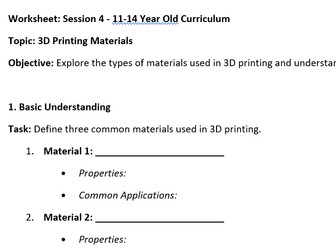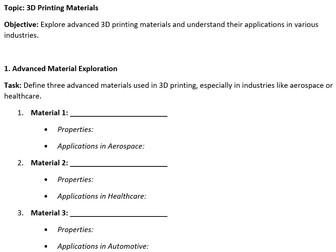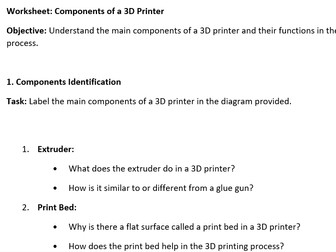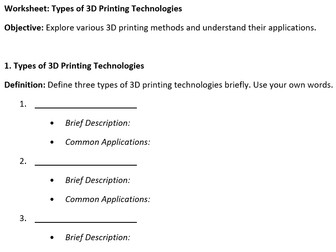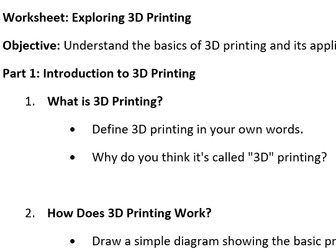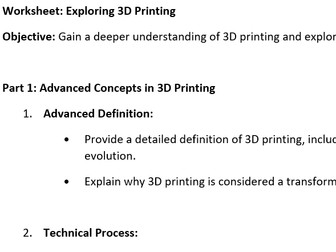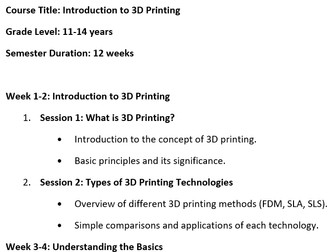session 4 - 11-14 years - 3D printing materials
<p>a simple worksheet made up of 4 parts asking pupils to complete tasks in each section.<br />
Sections included;</p>
<p>1 - basic understanding of some materials<br />
2 - material properties<br />
3 - material considerations<br />
4 - hands on activity</p>
<p>This can be used as a standalone research task or can be broken down into individual tasks to be used as necessary</p>
